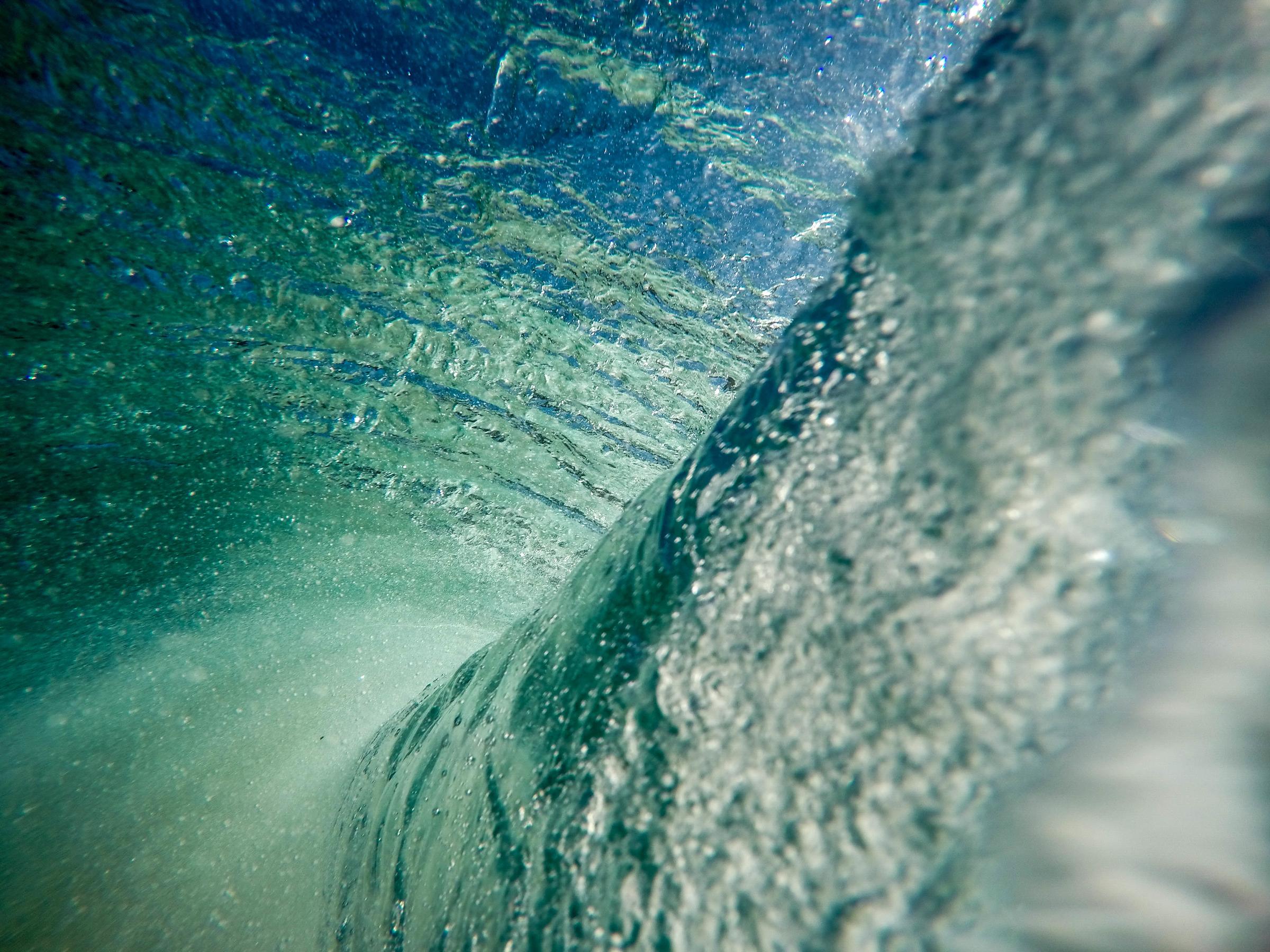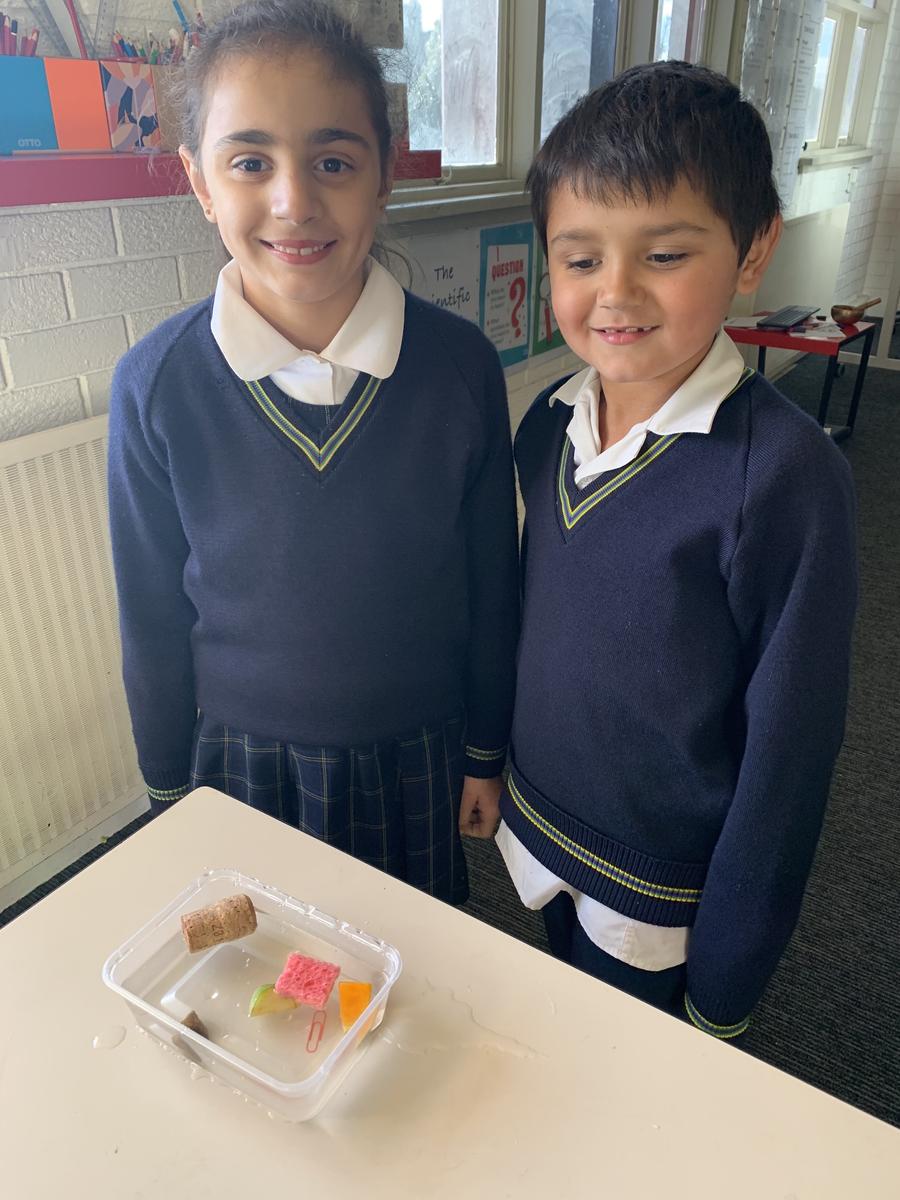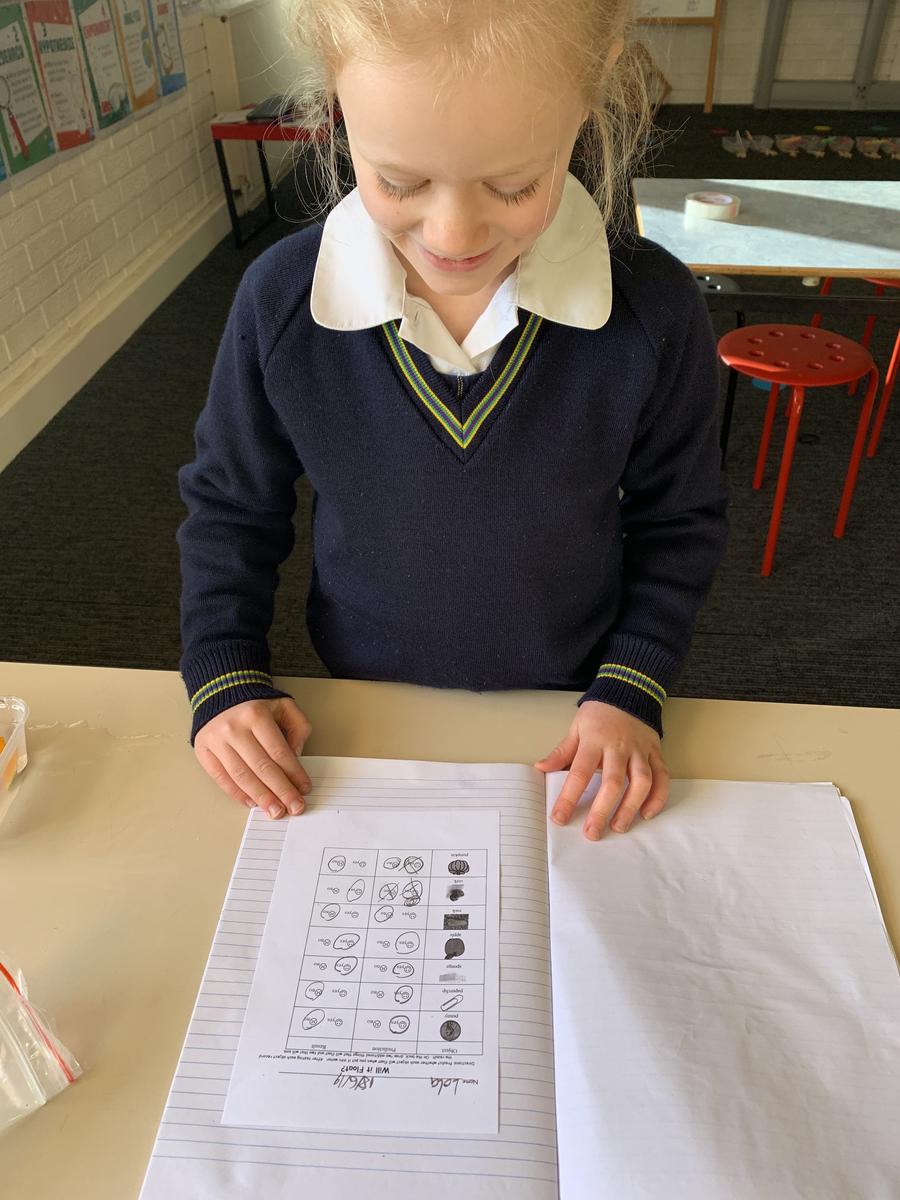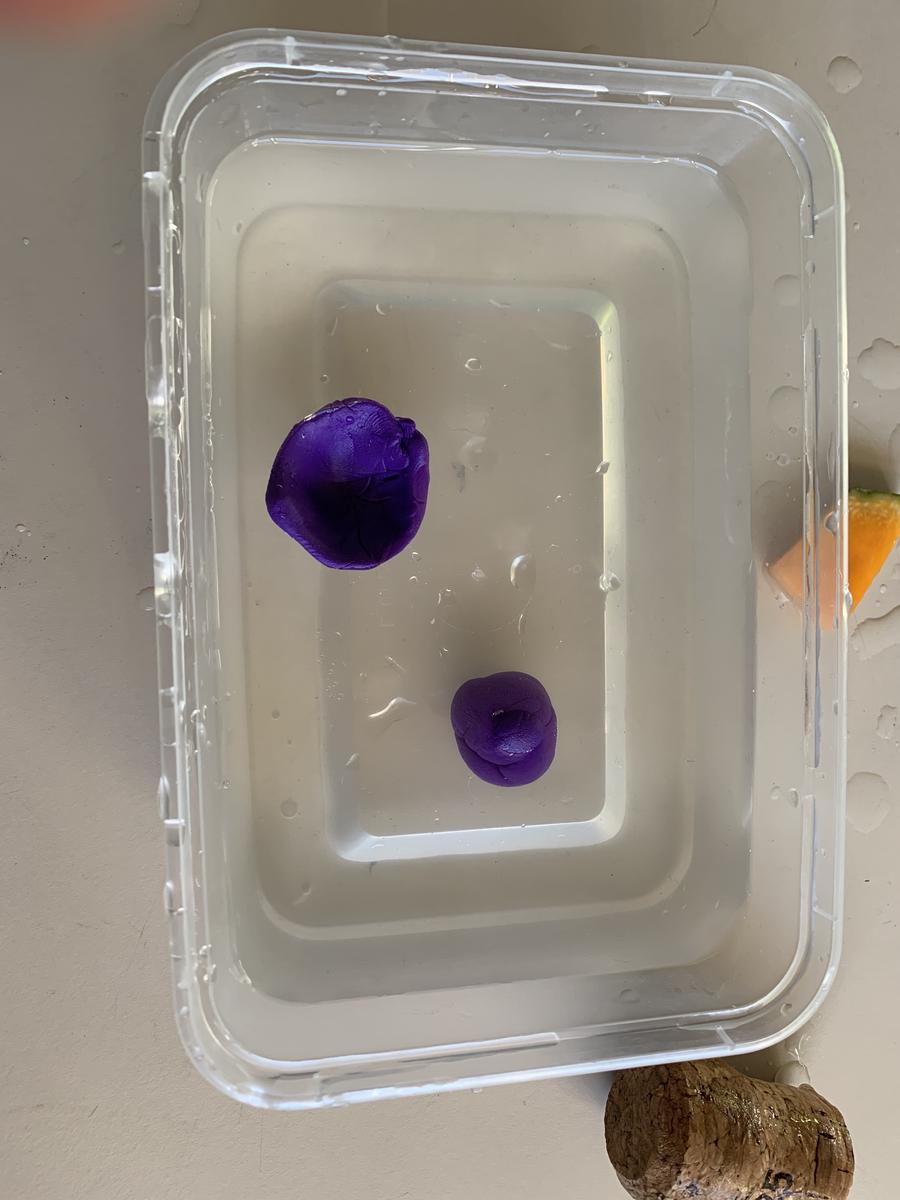STEM Education
To float or to sink, that is the question!
In Years 1/2 last week, we explored floating and sinking. We began our inquiry with the book 'Who Sank the Boat' by Pamela Allen. In a class discussion, students shared their ideas around the following questions:
What do we mean by ‘floating’?
What determines whether an object will float or sink in water?
What causes objects to float (i.e. what are the forces involved in floating)?
Do only small, light weighted objects float?
Does the shape or the material of the object determine if the object can float?
The scientific understanding of ‘floating’ is that objects are suspended in water (or on water) or air, held up by buoyancy forces that balance gravity.
Students used the scientific method to predict, observe and explain why some objects could float and others would sink. For this investigation, students tested a coin, a paperclip, a piece of pumpkin, a cork, a piece of apple, a piece of sponge and a rock, to observe if each object would float or sink. Students were also very fascinated to observe that a ball of plasticine would sink, yet the same piece of plasticine, if shaped like a boat, would float.
It was wonderful to facilitate a lesson of inquiry, investigation and scientific discoveries with the Year 1/2 students.
Students are encouraged to test additional household objects at home to determine if they will float or sink in water. This can be achieved in a small container or bathroom sink. Please encourage students to predict the results before testing each object.
You can further explore with your children some real life applications in technology that are related to the topic of floating and sinking. Some examples are hydrometers, submarines, ships, airships, weather balloons, hot-air balloons, buoyancy vests and life jackets.




